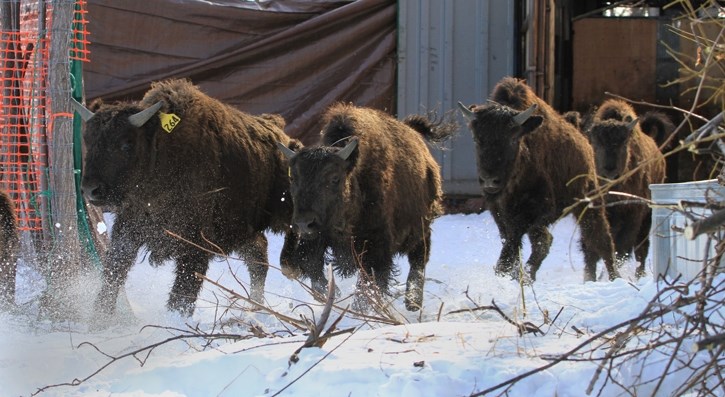Parks Canada plans to reintroduce bison into Banff National Park by 2017 will not only see the species return to the mountain ranges, but will support a variety of other species of bugs and birds as well.
In addition to supporting populations of insects and insectivore species like birds, bison expert Wes Olsen said recently that establishing a bison population in the Panther Valley of Banff National Park would provide a critical linkage to other ecosystems across North America for migratory species.
Olsen was speaking at the Whyte Museum last Friday (May 26) on the connection between bison, bugs and birds. The retired park warden, one of the world’s foremost authorities on bison reintroduction, discussed the ecological effects of plains bison historically and what their return will mean for the landscape.
In addition to linking ecosystems, bison also support other species through what it leaves behind – dung patties and hair.
“Most species co-evolved with bison over the long term from the Pleistocene era to now and most were dependent in varying degrees on bison,” he said. “Every newly established bison population is going to re-establish those ecosystem linkages and hopefully bring those systems into a healthy balance.”
Olsen went back to the origin of the species and its evolution in North America and provided a history of its ecology to the present species, the plains bison and wood bison, which remain.
It is plains bison that are to be reintroduced in Banff, and when bison were dominant across North America, there were up to 30 million plains animals. That was before there began a decline in population through habitat loss. Olsen said at one point in the late 1880s there were only 23 plains bison remaining, from which all current populations can be traced.
Throughout that time and changes in population, there were subsequent effects on the populations of insects and birds. Bison dung, the patties they leave behind, are a productive food source for insects, said Olsen.
“Most of the species that lived on the plains were dependent on things related to bison, including bison dung,” he said. “This is an incredibly important part of the ecosystem and it supplied food for a tremendous amount of insects.
“In Alberta, upwards of 300 insects will live within one bison patty during its time on the ground.”
Olsen said insect biomass from bison dung supports other species as well, including insectivore bird species, amphibians, herbivores and predators. It is “just an incredible complex ecosystem living inside this.”
Bison hair also contributes to a more productive ecosystem. Hair shed by plains bison in spring comes off in large felted mats and is the second warmest hair shed by a mammal in North America – according to Olsen. The hair is used by birds in their nests, increasing survival rates for a clutch of eggs, he added.
With 1,154 species of birds in North America, 45 grasslands species and 12 of those facing extinction, Olsen said establishing populations of bison in places like Banff is important. He said it creates places for birds to stop when they migrate and they will have an abundant source of food.
“Those stopover points, they are critical to the survival of these birds,” he said. “Bison reintroduction to the wild is incredibly important for all these species.
“That is what Banff is really striving toward, re-establishing a series of linked ecosystems.”
With 70 bison herds in North America, Olsen said each one represents a stopover point for migrating birds in spring and fall.
With a population expected in Banff’s Panther Valley in 2017, he said once bison are established in that location, the landscape will see more birds and bugs as a result.




